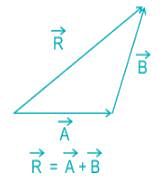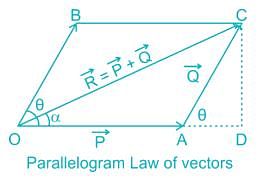Mechanical Engineering Exam > Mechanical Engineering Questions > If three forces, acting at a point, be in equ...
Start Learning for Free
If three forces, acting at a point, be in equilibrium then each force is proportional to the sine of the angle between the other two. This theorem is called
- a)Law of triangle of forces
- b)Law of parallelogram of forces
- c)Lami's theorem
- d)Trigonometrical theorem
Correct answer is option 'C'. Can you explain this answer?
| FREE This question is part of | Download PDF Attempt this Test |
Most Upvoted Answer
If three forces, acting at a point, be in equilibrium then each force ...
The Concept of Lami's Theorem
Lami's Theorem is a fundamental principle in mechanics that applies to three forces acting at a single point. This theorem states that if three forces are in equilibrium, then each force is proportional to the sine of the angle between the other two forces.
Understanding the Theorem
- The theorem is mathematically represented as:
\[
\frac{F_1}{\sin A} = \frac{F_2}{\sin B} = \frac{F_3}{\sin C}
\]
where:
- \(F_1, F_2, F_3\) are the magnitudes of the three forces.
- \(A, B, C\) are the angles opposite to the respective forces.
Conditions for Equilibrium
- For Lami's Theorem to hold true:
- The forces must be concurrent, meaning they all act at the same point.
- The forces must be in equilibrium, which means the net force acting on the point is zero.
Applications of Lami's Theorem
- Lami's Theorem is widely used in mechanical engineering to analyze structures and systems where multiple forces act at a point.
- It simplifies the calculations required to determine unknown forces and their angles.
Conclusion
- Option 'C', Lami's Theorem, provides a practical method for solving problems involving three forces in equilibrium.
- This theorem is essential for engineers and physicists when dealing with statics and dynamics in mechanical systems.
Lami's Theorem is a fundamental principle in mechanics that applies to three forces acting at a single point. This theorem states that if three forces are in equilibrium, then each force is proportional to the sine of the angle between the other two forces.
Understanding the Theorem
- The theorem is mathematically represented as:
\[
\frac{F_1}{\sin A} = \frac{F_2}{\sin B} = \frac{F_3}{\sin C}
\]
where:
- \(F_1, F_2, F_3\) are the magnitudes of the three forces.
- \(A, B, C\) are the angles opposite to the respective forces.
Conditions for Equilibrium
- For Lami's Theorem to hold true:
- The forces must be concurrent, meaning they all act at the same point.
- The forces must be in equilibrium, which means the net force acting on the point is zero.
Applications of Lami's Theorem
- Lami's Theorem is widely used in mechanical engineering to analyze structures and systems where multiple forces act at a point.
- It simplifies the calculations required to determine unknown forces and their angles.
Conclusion
- Option 'C', Lami's Theorem, provides a practical method for solving problems involving three forces in equilibrium.
- This theorem is essential for engineers and physicists when dealing with statics and dynamics in mechanical systems.
Free Test
FREE
| Start Free Test |
Community Answer
If three forces, acting at a point, be in equilibrium then each force ...
Lami's theorem:
It states that if three forces acting at a point are in equilibrium, each force is proportional to the sine of the angle between the other two forces.
Consider three forces FA, FB, FC acting on a particle or rigid body making angles α, β and γ with each other.

Therefore,

Important Points
Triangle Law of Forces: It states that if two forces acting simultaneously on a particle, be represented in magnitude and direction by the two sides of a triangle, taken in order; their results may be represented in magnitude and direction by the third side of the triangle, taken in the opposite order.”

Law of the parallelogram of force:
It states that if two forces, acting at the point of a body, be represented in magnitude and direction by the two adjacent sides of a parallelogram, then their resultant is represented in magnitude and direction by the diagonal of the parallelogram contained in between the two adjacent forces.

It states that if three forces acting at a point are in equilibrium, each force is proportional to the sine of the angle between the other two forces.
Consider three forces FA, FB, FC acting on a particle or rigid body making angles α, β and γ with each other.

Therefore,

Important Points
Triangle Law of Forces: It states that if two forces acting simultaneously on a particle, be represented in magnitude and direction by the two sides of a triangle, taken in order; their results may be represented in magnitude and direction by the third side of the triangle, taken in the opposite order.”

Law of the parallelogram of force:
It states that if two forces, acting at the point of a body, be represented in magnitude and direction by the two adjacent sides of a parallelogram, then their resultant is represented in magnitude and direction by the diagonal of the parallelogram contained in between the two adjacent forces.

Attention Mechanical Engineering Students!
To make sure you are not studying endlessly, EduRev has designed Mechanical Engineering study material, with Structured Courses, Videos, & Test Series. Plus get personalized analysis, doubt solving and improvement plans to achieve a great score in Mechanical Engineering.

|
Explore Courses for Mechanical Engineering exam
|

|
Similar Mechanical Engineering Doubts
If three forces, acting at a point, be in equilibrium then each force is proportional to the sine of the angle between the other two. This theorem is calleda)Law of triangle of forcesb)Law of parallelogram of forcesc)Lamis theoremd)Trigonometrical theoremCorrect answer is option 'C'. Can you explain this answer?
Question Description
If three forces, acting at a point, be in equilibrium then each force is proportional to the sine of the angle between the other two. This theorem is calleda)Law of triangle of forcesb)Law of parallelogram of forcesc)Lamis theoremd)Trigonometrical theoremCorrect answer is option 'C'. Can you explain this answer? for Mechanical Engineering 2024 is part of Mechanical Engineering preparation. The Question and answers have been prepared according to the Mechanical Engineering exam syllabus. Information about If three forces, acting at a point, be in equilibrium then each force is proportional to the sine of the angle between the other two. This theorem is calleda)Law of triangle of forcesb)Law of parallelogram of forcesc)Lamis theoremd)Trigonometrical theoremCorrect answer is option 'C'. Can you explain this answer? covers all topics & solutions for Mechanical Engineering 2024 Exam. Find important definitions, questions, meanings, examples, exercises and tests below for If three forces, acting at a point, be in equilibrium then each force is proportional to the sine of the angle between the other two. This theorem is calleda)Law of triangle of forcesb)Law of parallelogram of forcesc)Lamis theoremd)Trigonometrical theoremCorrect answer is option 'C'. Can you explain this answer?.
If three forces, acting at a point, be in equilibrium then each force is proportional to the sine of the angle between the other two. This theorem is calleda)Law of triangle of forcesb)Law of parallelogram of forcesc)Lamis theoremd)Trigonometrical theoremCorrect answer is option 'C'. Can you explain this answer? for Mechanical Engineering 2024 is part of Mechanical Engineering preparation. The Question and answers have been prepared according to the Mechanical Engineering exam syllabus. Information about If three forces, acting at a point, be in equilibrium then each force is proportional to the sine of the angle between the other two. This theorem is calleda)Law of triangle of forcesb)Law of parallelogram of forcesc)Lamis theoremd)Trigonometrical theoremCorrect answer is option 'C'. Can you explain this answer? covers all topics & solutions for Mechanical Engineering 2024 Exam. Find important definitions, questions, meanings, examples, exercises and tests below for If three forces, acting at a point, be in equilibrium then each force is proportional to the sine of the angle between the other two. This theorem is calleda)Law of triangle of forcesb)Law of parallelogram of forcesc)Lamis theoremd)Trigonometrical theoremCorrect answer is option 'C'. Can you explain this answer?.
Solutions for If three forces, acting at a point, be in equilibrium then each force is proportional to the sine of the angle between the other two. This theorem is calleda)Law of triangle of forcesb)Law of parallelogram of forcesc)Lamis theoremd)Trigonometrical theoremCorrect answer is option 'C'. Can you explain this answer? in English & in Hindi are available as part of our courses for Mechanical Engineering.
Download more important topics, notes, lectures and mock test series for Mechanical Engineering Exam by signing up for free.
Here you can find the meaning of If three forces, acting at a point, be in equilibrium then each force is proportional to the sine of the angle between the other two. This theorem is calleda)Law of triangle of forcesb)Law of parallelogram of forcesc)Lamis theoremd)Trigonometrical theoremCorrect answer is option 'C'. Can you explain this answer? defined & explained in the simplest way possible. Besides giving the explanation of
If three forces, acting at a point, be in equilibrium then each force is proportional to the sine of the angle between the other two. This theorem is calleda)Law of triangle of forcesb)Law of parallelogram of forcesc)Lamis theoremd)Trigonometrical theoremCorrect answer is option 'C'. Can you explain this answer?, a detailed solution for If three forces, acting at a point, be in equilibrium then each force is proportional to the sine of the angle between the other two. This theorem is calleda)Law of triangle of forcesb)Law of parallelogram of forcesc)Lamis theoremd)Trigonometrical theoremCorrect answer is option 'C'. Can you explain this answer? has been provided alongside types of If three forces, acting at a point, be in equilibrium then each force is proportional to the sine of the angle between the other two. This theorem is calleda)Law of triangle of forcesb)Law of parallelogram of forcesc)Lamis theoremd)Trigonometrical theoremCorrect answer is option 'C'. Can you explain this answer? theory, EduRev gives you an
ample number of questions to practice If three forces, acting at a point, be in equilibrium then each force is proportional to the sine of the angle between the other two. This theorem is calleda)Law of triangle of forcesb)Law of parallelogram of forcesc)Lamis theoremd)Trigonometrical theoremCorrect answer is option 'C'. Can you explain this answer? tests, examples and also practice Mechanical Engineering tests.

|
Explore Courses for Mechanical Engineering exam
|

|
Suggested Free Tests
Signup for Free!
Signup to see your scores go up within 7 days! Learn & Practice with 1000+ FREE Notes, Videos & Tests.
























